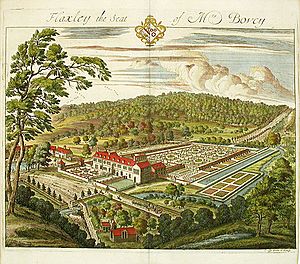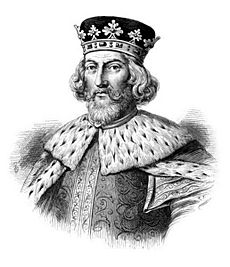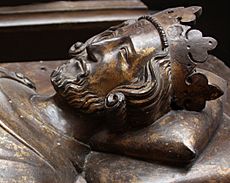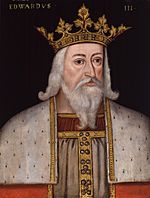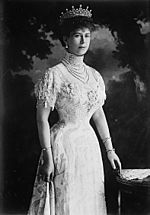Flaxley Abbey facts for kids
Quick facts for kids Flaxley Abbey |
|
|---|---|

The grounds of Flaxley Abbey
|
|
| Former names | Dene Abbey |
| General information | |
| Status | Grade I listed |
| Type | Stately home |
| Location | Gloucestershire |
| Town or city | Flaxley |
| Country | UK |
| Coordinates | 51°50′10″N 02°27′07″W / 51.83611°N 2.45194°W |
| Construction started | 30 September 1151 |
| Completed | 1154 |
| Design and construction | |
| Architect | Redesign Anthony Keck. |
| Other designers | Interior Design Oliver Messel. |
Flaxley Abbey is a very old and important building in England. It used to be a home for monks, but now it's a large private house. It's located near a village called Flaxley in the Forest of Dean, Gloucestershire. It's considered a "Grade I listed" building, which means it's very special and protected because of its history and architecture. For a long time, it was the main home of the Crawley-Boevey family.
Contents
History of Flaxley Abbey
How Flaxley Abbey Started
Flaxley Abbey was first built in 1151. It was started by a powerful person named Roger Fitzmiles, 2nd Earl of Hereford. He wanted it to be a Cistercian monastery. A monastery is a place where monks live and pray. People say it was built where Roger's father, Milo, died during a hunting trip in 1143.
The monks who came to live and build the abbey came from another monastery called Bordesley Abbey. This abbey was founded in Worcestershire in 1138. Later, important religious leaders like Pope Celestine III and Pope Alexander III gave the monks of Flaxley Abbey special permission not to pay certain taxes.
Royal Connections and Support
Flaxley Abbey became very important to the kings of England. King Henry II protected the monastery. It was even used as a place for kings to stay when they went hunting.
In 1227, King Henry III gave Flaxley Abbey a special gift. He gave them control over some woods called Abbot's Woods. Later, King Edward III visited Flaxley Abbey many times. In 1353, he gave the abbey money from the lands in the Forest of Dean.
The End of the Monastery
The time of monasteries in England came to an end. This period is known as the Dissolution of the Monasteries. Flaxley Abbey was officially closed on September 4, 1536.
On March 21, 1537, the abbey and its lands were given to Sir William Kingston. He was an important official for King Henry VIII. Sir William was in charge of the Tower of London and even oversaw the execution of Queen Anne Boleyn. During this time, parts of the old abbey were changed into a large country house.
The Crawley-Boevey Family
In 1648, a rich merchant and lawyer from London named James Boevey bought Flaxley Abbey. He bought it with his half-brother, William. Later, the house was inherited by Catherina Boevey. She was married to William Boevey, James's son. When Catherina died in 1727, the house went to Thomas Crawley, who later became known as Thomas Crawley-Boevey.
The family became known as the Crawley-Boevey Baronets in 1784. A baronet is a special title, like a knight, that can be passed down in a family. During this time, the house was greatly rebuilt. This redesign was done by an architect named Anthony Keck. As baronets, the house and its lands continued to be passed down from father to eldest son. Flaxley Abbey remained the family home until 1960.
Gardens and Landscape
After her husband William Boevey passed away, Catherina Boevey created beautiful Dutch-style gardens at Flaxley Abbey. It is believed that her friend, Maynard I Colchester, was inspired by her canal gardens when he designed his own Westbury Court Garden. Catherina continued to improve the gardens and the abbey itself. However, over time, the Dutch-style gardens at Flaxley Abbey were changed.
Much later, between 1962 and 1963, new modern gardens were designed. The inside of the house was also redesigned. This work was done by Oliver Messel, a famous theater and set designer.
Notable Visitors
Many important people have visited Flaxley Abbey over the centuries:


